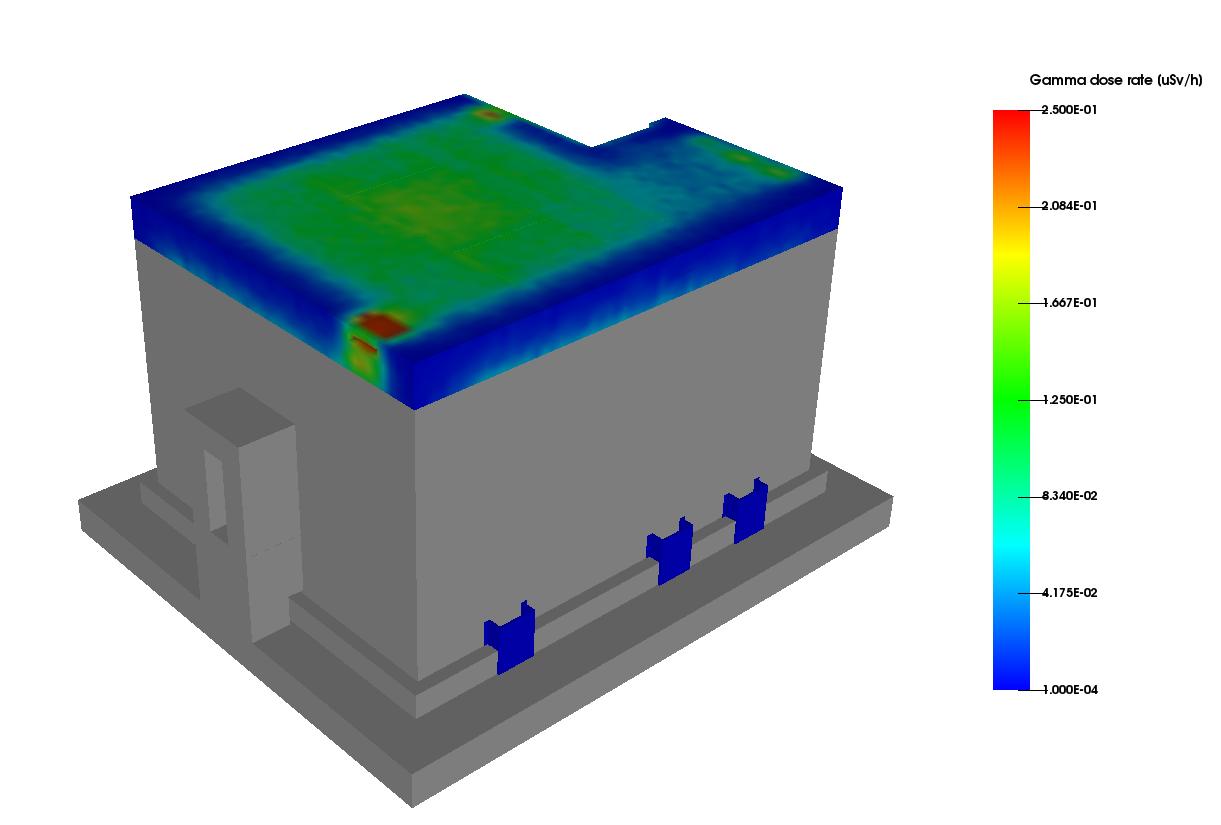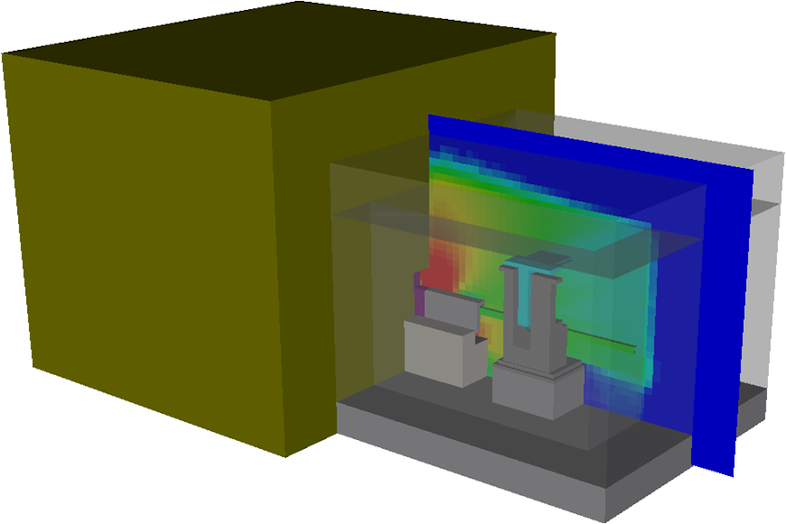Within the confines of our radiation protection-related researches we quantify dose rate fields of given arrangements by simulations - and in certain cases by measurements as well.
Designing radiation protection in the ESS


The Institute of Nuclear Techniques and the Centre for Energy Research (MTA) participate in close cooperation in the development and implementation of the European Spallation Source (ESS) project. The ESS is a unique, high-intensity neutron source that is based on the nuclear spallation principle: a linear accelerator accelerates protons to 2 GeV which collide with a rotating, helium-cooled tungsten target. By this process, intense pulses of neutrons are generated, which will be used for various material and structure studies.
The operation of the accelerator - and even after shutdown due to activation - generates strong neutron and gamma radiation along the entire length of the neutron guide, which must be properly shielded for safe operation. The institute was responsible for the radiation protection design of this shielding for the NMX macromolecular diffractometer beamline.
During this design process, we determined in detail the radiation field around the neutron beam, identified the most critical points, and provided suggestions to improve the shielding performance. Finally before installation, we had to prove that, outside the shielding structures, the dose rate values did not exceed the constraints that ensure the safety of workers. For radiation protection calculations, we used the MCNP6 particle physics code, for which the geometry was prepared with the SuperMC conversion algorithm based on the provided CAD models.
The first major milestone in the collaboration was completed in the spring of 2020: the construction of the experimental cave at the research center's site in Sweden has begun, and in early 2022 the assembly of the neutron guide shielding may begin.

